×
[PR]上記の広告は3ヶ月以上新規記事投稿のないブログに表示されています。新しい記事を書く事で広告が消えます。
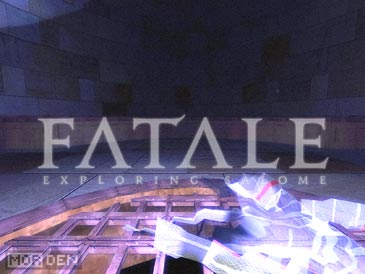
There have always been two kinds of computer generated content that were meant to entertain: games and mostly non interactive demos. In the first category we get all the commercial and indie productions where it's all about the plot or skill. In the second category, we have the vast world of computer scene, which, for the most part, offers us non-interactive audiovisual demonstrations that aim to either entertain or impress, by pushing the hardware boundaries.
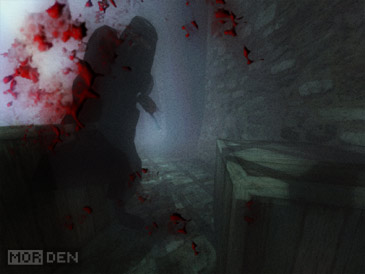
There has been, however, very little content that would fit in between all the games and scene demos. Lately, Tale of Tales have been hard at work, trying to bridge this gap. Their philosophy is simple - art comes first, interactivity, plot and accessibility comes second. This approach resulted in several off-beat titles being made, one of which, The Graveyard, I have already written about. Tale of Tales' newest, for the lack of a better description, interactive experience is called Fatale: Exploring Salome.
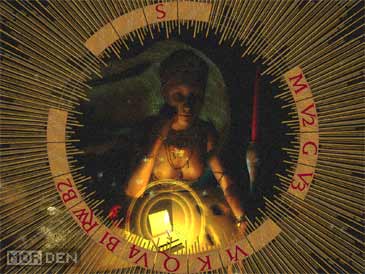
Fatale is not a game in the usual sense of the word, but, simply because it feels wrong to call it an interactive experience over and over again, I'll allow myself to call it just that - a game. The story presented in Fatale is based on Oscar Wilde's Salome but if you're hoping to play a plot driven adventure featuring the daughter of Herodias and tons of drama, you will be disappointed. This time, you'll be controlling the actions of John the Baptist, briefly.
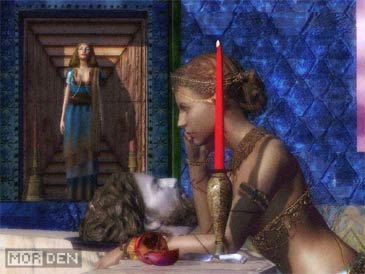
The game does not waste any time on explaining the Salome story to the player, so unless you know it already, you'll have to educate yourself on the subject. But, since I'm a nice guy and you're already here, reading this, I might just as well spare you the trouble of looking it up. Long story short - Salome is a biblical character, featured in the gospels of the New Testament. On the day of her stepfather's, Herod Antipas', birthday, she performed a dance, as a reward for which, she would get one of her wishes granted. Influenced by her mother, Herodias, Salome requested John the Baptist to be beheaded. This was Herodias' revenge on John, for calling her marriage to Herod unlawful.
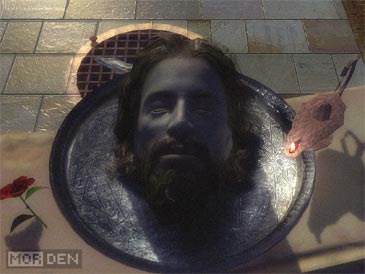
That's the original story. Oscar Wilde's version has Salome taking an interest in John the Baptist, called Jokanaan in the play, but being rejected by him and called daughter of Sodom. Here, it is the rejection that is the reason behind Jokanaan's execution. In both versions however, the cut off head is placed on a silver platter that's given to Salome. As you can see, starting the game as John the Baptist eliminates any possibility of a happy end. Especially since the very first scene is taking place in a dungeon, atop of which Salome is dancing the dance of seven veils, after which she will get her wish granted.
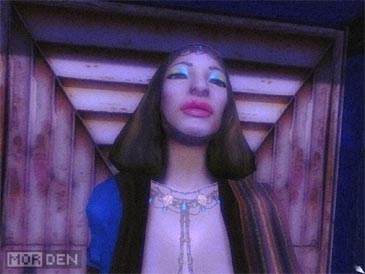
We do lose our head very early in the game, but after that we get to roam freely around and above the terrace build upon the place of our execution. Time seems to be frozen and we find Salome looking into empty space with the severed head on a platter beside her. This scene is the main part of the experience. We explore the terrace while stealing the flames from the candles. We find the seven veils scattered all over the place and even though we do not have a physical form, we can affect some objects by creating really gentle gusts of wind which allow us to move the veils around.
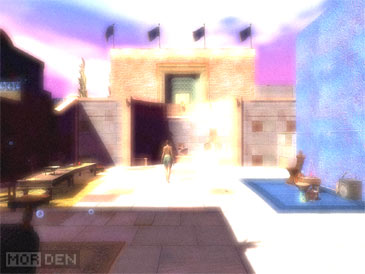
Once we steal all the flames, the night turns into day and the game ends, or so it would seem. When we start it again, we'll witness Salome's dance viewed from Herod's perspective. The girl will be working hard to keep us entertained, and all we can do is zoom in and admire her beauty for brief moments, before the flashes showing parts of her body will cause the camera to zoom out again. When Salome is done, the show really is over and we can start again, from scratch.
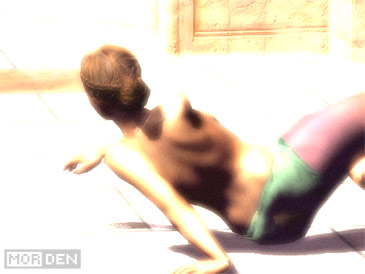
All this writing and I didn't even mention the music. A huge mistake, since the music and sound are a very important part of the Fatale experience. When imprisoned at the very beginning, we'll hear the music playing. The music that accompanies Salome's dance. Once it reaches its climax, our head comes off. When we explore the terrace and steal the flames, we hear all sorts of whispers, which create an unforgettable atmosphere. During the last sequence when Salome dances in front of Herod, we get to hear the same music as the one we heard at the beginning, only this time we hear it clearly.

Is Fatale worth the $7 Tale of Tales is asking for it? I'd say it is. It's less play than The Path, but so much more than The Graveyard, and we don't have to pay extra just to see the severed head. There are very few characters in the game, but those you'll see look brilliant, which isn't a surprise really, since they were designed by Takayoshi Sato of Silent Hill fame. Tale of Tales did a great job of putting this incredible experience together. It's definitely not for everyone, but those who are curious and don't have high hopes for hours of gameplay might get a pleasant surprise. After finishing Fatale I'm still curious about one thing, though. Throughout the terrace scene there are several modern age objects placed here and there. You can spot a guitar with an amplifier, a match-book with "Salome - Call me" written on it and an iPod on Salome herself. What's that about, Tale of Tales?
PR
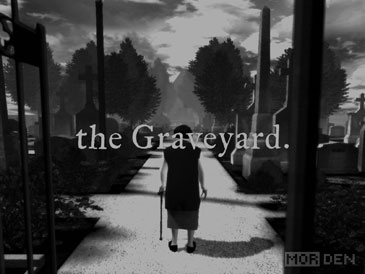
Only in the world of independent productions can we see games such as this one. In fact, after playing The Graveyard, I asked myself how much content does a game have to offer to be considered a game. Belgian developer duo Tale of Tales apparently think, that the feel and art direction are more important than gameplay, which in its turn makes The Graveyard into a nice experiment, but not necessarily a game in the usual sense of the word.
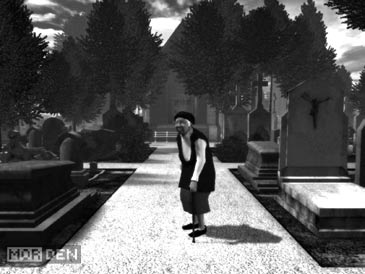
We take control of an old lady, who visits the local graveyard. The objective here is to get to the bench by the chapel. We can't go beyond the main path, and even if we stray from it, the camera won't follow our character, so there is virtually no exploration. After we get to the bench, we sit down and reminisce the years that have passed and the people we knew and lost - All that put into a Dutch song that luckily comes with subtitles.
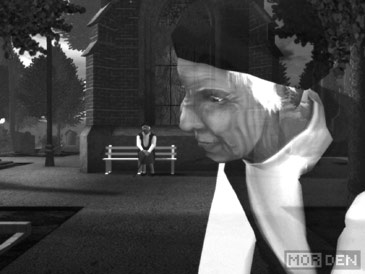
Simple as it may be, The Graveyard is a breath of fresh air in the world of shoot 'em ups, puzzlers and platformers. Believe it or not, the game is available in both demo and full versions. The full version will set us back $5 and is identical to the demo, except that each time you play the game, the old lady can die. That's pretty much all I can tell you about the full version, since I didn't feel like spending money just to see an old person die.
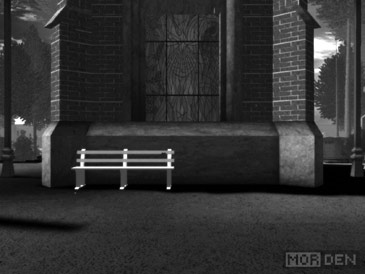
If you, however, would like to get the full featured version, go to the game's official webpage, choose either the Windows or Mac version and knock yourself out. If you like Tale of Tales' more artsy approach to game design, you could also check out The Path - a horror game like no other.
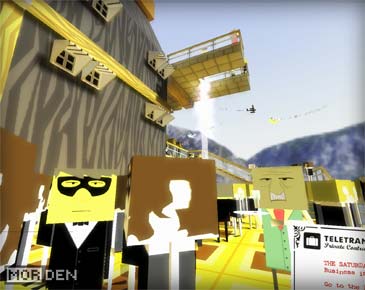
If anyone ever told you that good adventure games can never be played from first person perspective view, they were wrong. Before I talk about this game I have to say one thing - I love indie productions. Unrestrained, innovative, and most of all, free. I've come across Gravity Bone by accident and I'm really glad I had a chance to play it. It's one of those titles that prove how much can be done with easily accessible tools and a decent amount.
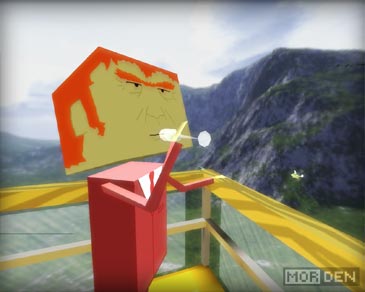
The first thing I thought when I saw this game was "Wow, this really reminds me of Naomi Iwata's Gregory Horror Show". I made this immediate association based solely on the blocky character design, because the feel is completely different here. The game starts without any explanations. You're presumably a guy, in an elevator, on his way down. In your hand you hold a card with simple instructions which point you in the right direction and that is that.
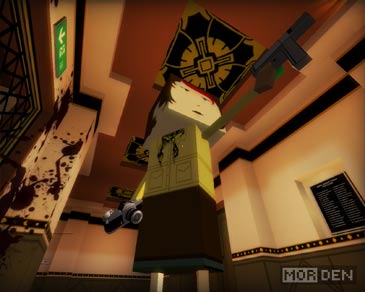
Everything we need to do, we're told by a voice on a tape we'll have to find. I won't be spoiling it for you, but the game is really simple, yet extremely enjoyable. There's just something about it - From the second you step out of that elevator, you're a part of this world and you feel it. And you know that playing this game will be a memorable experience. And it is.
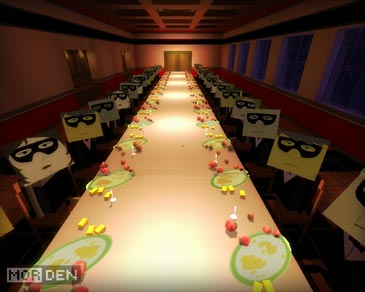
The whole game was created by one person - Brendon Chung, who used Knightmare's KMQuake II, which is a modification of ID Software's Quake II engine, as a base for his game - All thanks to John Carmack's unselfish policy of releasing his engine sources to the public. It's great to know that games like this one can be built and released as standalone productions rather than mods for the ever so popular Source engine. If you're interested in the technical aspects of Gravity Bone, read the manual enclosed with the game. You'll find a full list of tools used by Mr. Chung.
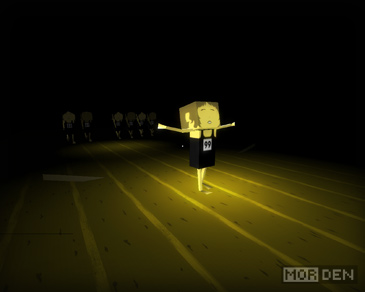
I've said some good things about this title, but there's one major flaw which I would like to address. The game is way too short. I know there is no specific measure of game length and there are no guidelines on how long the games should be, but I wouldn't even call this title short, simply because it's shorter than short. It's a shame really, because from the second I started playing this title, I wanted more. Even before I finished it. So if you're looking for a game that lasts, you'll be disappointed. That of course doesn't mean you shouldn't give it a try - on the contrary. It deserves your attention. You can get this title for free from Blendogames.com, and check out other titles on the download list while you're at it.
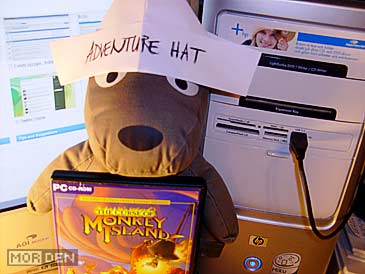
Looks like the time is nigh to put my adventure hat on, because pointing and clicking is back in style. I wish there was an adventure game hating person here right now, who never believed adventure games were any good, and to whom I could say "I told you so", because I always believed the time would come when people who enjoy a good puzzle and a funny joke would again be enjoying decent productions. Sadly, none of the people I know care that much about adventure games, or games in general.
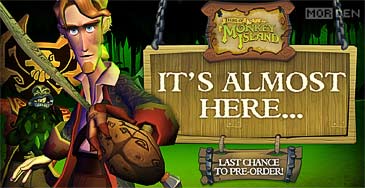
Recently we've seen two big announcements from LucasArts and Telltale Games. They both, rather unexpectedly, admitted to be working on Monkey Island projects. While LucasArts made a remake of the classic The Secret of Monkey Island, Telltale Games announced a whole new Monkey Island series - Tales of Monkey Island, divided into seasons and episodes, much like the rest of their titles.
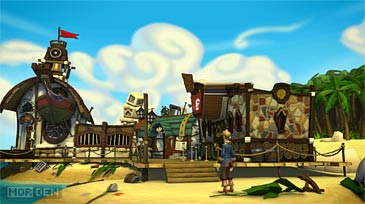
Not too long ago, I chose to pre-order Tales of Monkey Island, tempted by the Steve Purcell painted slipcase, which comes with the physical copy of the game, once all five episodes of the first season are out. Aside from the slipcase, all those who pre-ordered, got a coupon code for a free episode and access to an exclusive part of Telltale forums, Private Pirates Club, which before the game premiered was off limits for regular mortals. Now it's open for viewing, but all the topics are locked. Too bad I didn't leave my mark while I still could - Maybe I'll be able to post a question to Dominic Armato before the second episode premieres and I think of a question good enough to post in public.
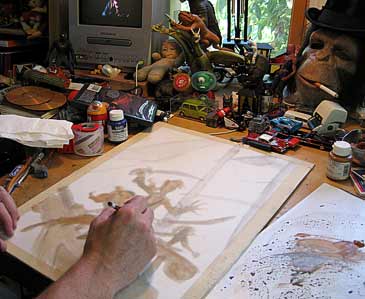
Before Tales of Monkey Island premiered, I used up my bonus code and got myself the very first episode of Wallace & Gromit's Grand Adventures. Since the episodes are $8,95 a pop, and there's only four of them in the first season, I figured it was a win-win situation for me. Telltale offers the first season bundle for $34,95, which hardly makes any difference whether you buy the season as a whole, or buy the episodes separately. Buying single episodes would set me back $35,8 and since I got one episode for free, all I have to do is pay $26,85 for the remaining ones, and I got myself a complete season with the disc.
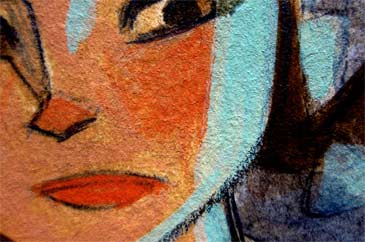
I was curious about the Wallace & Gromit game ever since it came out. I'm not too big on game demos, especially of those games I know I eventually want to get, so a free copy of Fright of the Bumblebees was a real treat for me. I already knew the characters all too well, so I wanted to know how did Telltale do this time around. After all, their Sam & Max series came out excellent, no matter what the fanboys want you to think.
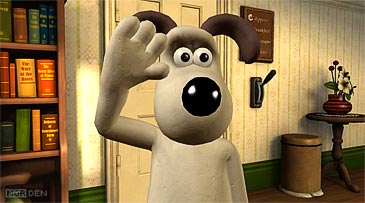
The Grand Adventure and Fright of the Bumblebees starts off, like any regular day, with breakfast. Lazy Wallace needs his nutrients, so naturally, our very first mission will be to feed him. I guess Telltale figured the best way to start off a game was to make you run chores. Let's stop there, because it sounds like I'm complaining, while in fact, fixing the breakfast is rather enjoyable and free of stress - And it can't be compared to the chaos Wallace and his inventions create later on.
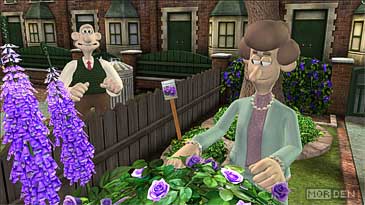
The plot is simple: Wallace got himself a debt he needs to repay, and he intends to do that by delivering no less than fifty gallons of honey to a local shop. The problem is, Wallace can't get the production going unless he comes up with an obscene amount of flowers to feed his bees. Being an inventor however, he quickly comes up with a totally unrealistic solution which gets everyone in trouble. I don't want to be spoiling too much, so let's leave the story and focus on the rest.
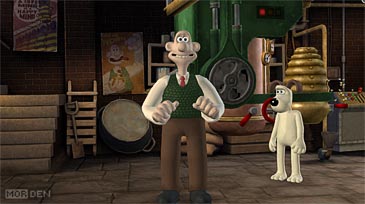
The game introduces new style of controls and setup. While Sam & Max was all about pointing and clicking, in Wallace & Gromit we'll move about using either the arrow keys, or the more familiar alternative to those who play first person shooters, "WASD". I personally prefer the mouse interface, but I had no real problems with Telltale's decision. The only frustration was caused by the movement being relative to the camera angle, so if you enter a new area and the camera changes, the detections might change a bit - Just like they did in Alone in the Dark or Resident Evil games.
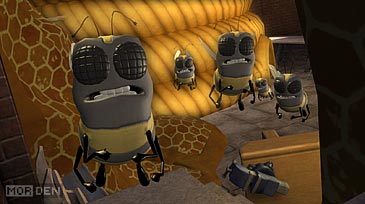
Everything else is spot on. Both sound and voice acting work great and those familiar with Wallace & Gromit series won't feel that something has changed. Graphics do their part as well. The characters try to look clay-like, and with some help from nice texturing, I'd say they pull it off. One thing I have noticed and thought was really cool was how the characters move and talk. Clay animation usually uses specific frames for vocals and the game mimics that really well. Same goes for Gromit's walk. He looks more like a clay model being animated, than a polygonal character with fluent moves, so props to the animators.
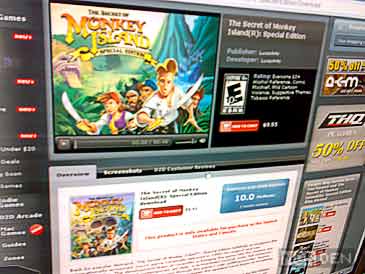
That about covers it for Wallace & Gromit - For now, because once I get the whole season and a game disc, I will most certainly talk about this title again. Now I would like to talk a little bit about The Secret of Monkey Island. Looks like someone at LucasArts realized there's still money to be made selling adventure games, but instead of making a proper sequel to Full Throttle or one of the Indiana Jones games, they decided to play safe and release a remake - Not that there's anything wrong with that.
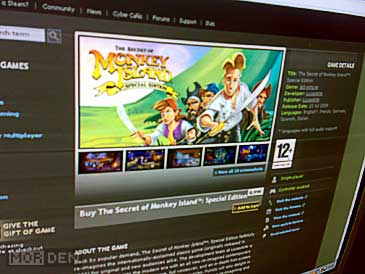
Recently, LucasArts have released some of their classic adventure games as digital downloads on Valve's Steam and IGN's Direct2Drive. Since digital distribution is becoming more and more popular and big companies don't believe in retail success of adventure games, The Secret of Monkey Island: Special Edition got only a digital release on the previously mentioned services and on Xbox Live Arcade. What is a consumer to do, when a game is only available in digital form? Choose the lesser of three aforementioned evils. Since I already know how retarded Steam is, and I don't like digital downloads for consoles in general, I started considering Direct2Drive.
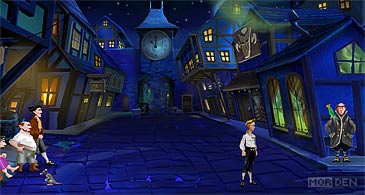
The problem with Direct2Drive is, they're racist. Why would I say such a thing? Because it's true. They tend to focus on United States based consumers and thus, making majority of the games available via their service inaccessible to people outside of the land of opportunity. However, as long as you can supply a valid US residential address and fake your IP, you're all set for sailing. Direct2Drive has one advantage over Steam - It doesn't come with a client that's hogging your computer's resources for no reason other than DRM protection.
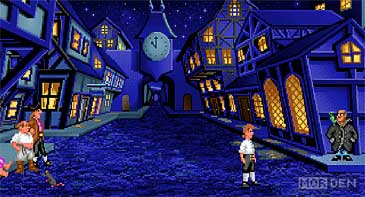
The only problem is, you have to fake your way through the registration, payment and activation so that the service actually believes you're from the US of A. On top of that, the game is activated via Trymedia. What's Trymedia, you might wonder. Remember RealNetworks and their crappy, adware infested RealPlayer? Trymedia is basically a division of RealNetworks, specializing in DRMing the living hell out of everything using their evil ActiveMARK solution. But hey, it's still better than Steam, and you only need to activate the product once. After that, it's a standalone program without a client attached to it.
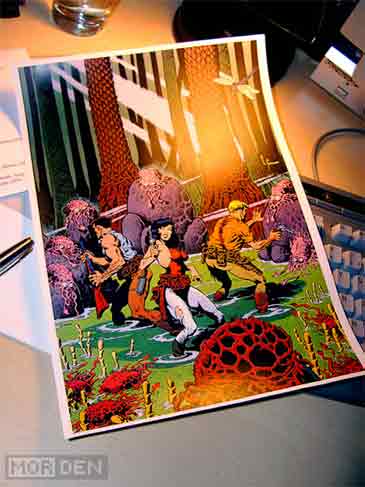
So now, I'm a happy owner of a digital copy of The Secret of Monkey Island: Special Edition and even though I haven't been able to play all that much since I'm still knees deep in Gobliiins 4, so far things are looking good. To make things even better, LucasArts made it possible to switch between the original CD version of the game and the remade Special Edition at any time using the F10 key. As soon as this game came out, investigative fans went to work and took everything apart. As it turns out, it is possible to extract the classic game and run it using the ScummVM engine interpreter.
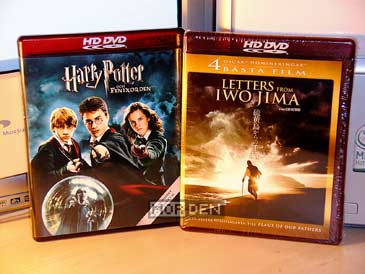
Another project that attracted a lot of attention, especially on the LucasForums, is an attempt to transfer the Special Edition voice over, only used in the upgraded version of the game, to the classic version of the game, creating a full "talkie" hybrid. I'm pretty excited about all of this, but I still hope that sooner or later LucasArts will release a retail version of this special edition.
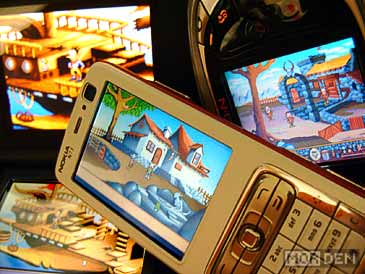
In other, not so adventurous news, I'm finally done retouching my Xenozoic Tales poster by Mark Schultz. It had some fold marks, which I got rid of, and now it's ready for high resolution, big format printing. I also managed to score to new HD DVDs. I did invest in the Xbox 360 HD DVD drive, so I need all the movies I can find. Well, not really, but the obscenely cheap ones I'll buy, and these were only $3,8 a pop, and if that's not a good deal, I don't know what is. Also, I am still playing the classic Goblins, no matter where I go. Why won't the developers see to it that we get decent games on portable devices other than Nintendo DS and PSP? I own a Symbian OS 9.x phone and there are very few decent Symbian games, only Java crap. Luckily, I have ScummVM, because aside from emulation, only decent games I've found are those by Infinite Dreams.
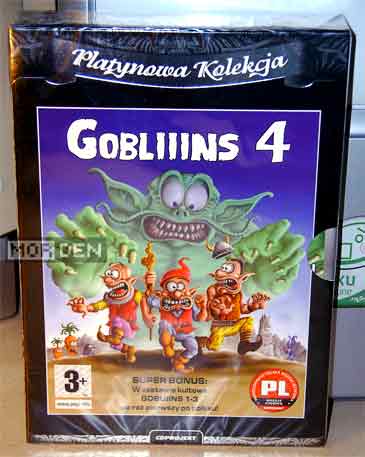
When I think of adventure games, especially those with a focus on some heavy puzzling, I always think of the Goblins series. Rarely has one game delivered such a huge amount of demanding puzzles. The greatness of Goblins doesn't end with its difficulty level, though. The series was always a complete package, featuring amazing graphics and memorable soundtracks. Now, the king of puzzlers is back to challenge us one more time.
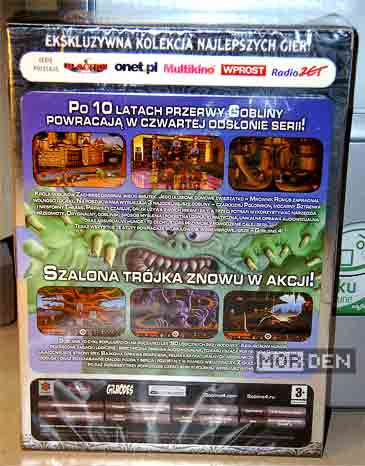
Just as quickly as the series appeared, it went off the radar back in 1993 and no one heard of it again, up until the year 2004, when Pierre Gilhodes officially announced the sequel. The wait was not over yet, as the years passed and the official website remained unchanged, without so much as a trace of an update. I remember writing about Gobliiins 4 back in 2007 - Back then I started to fear that Gobliiins 4 would be one of those unfortunate titles that end their lives in the fires of development hell.
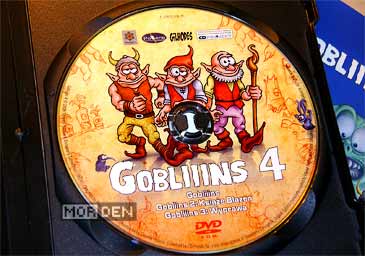
I tried to keep positive, seeing as many classic franchises got resurrected. After all, who would ever expect to see a new Sam & Max or Simon the Sorcerer title in the age of console gaming and a precious few adventures? So finally, in the year 2009 I got what I have been waiting for, after no more and no less than sixteen years. Gobliiins 4 was here.
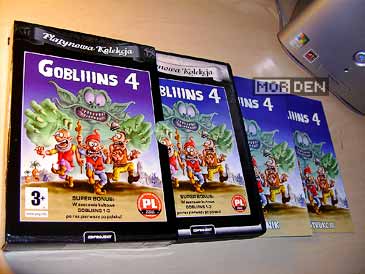
As the number of i's in the title and the cover art suggest, once again we'll take control of three goblins, and thanks to the unique abilities of each and every one of them, we'll venture through puzzle filled rooms. Gobliiins 4, much like its predecessors, doesn't send you running from location to location. Each level is a single room, and once all of the puzzles in it are solved, you can move on and continue your journey to the next one.
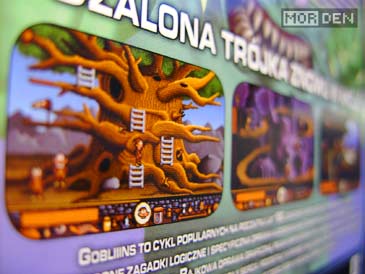
The story is as simple as can be. You, a goblin detective named Tchoup, get a letter from King Badigoince, instructing you to find your two friends and get your rear-ends to the castle - pronto. Being a faithful subject, Tchoup wastes no time and embarks on a search for Stucco and Perluis. Each of the characters has his own level and to gather a full party, you'll need to complete a number of chores made into puzzles. After that, it's off to the castle and so the story starts.
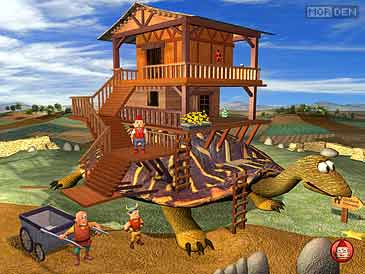
It's not the most exciting of plits, but Goblins games were never about the story. In fact, first three games didn't even have proper dialogs. All you could expect from the game was a few lines of text per level and that was that. When you saw a sleeping giant blocking your way, you couldn't just wake him up and ask him what he wants - the game wanted you to figure it out on your own, and that made Goblins so much tougher and more entertaining.
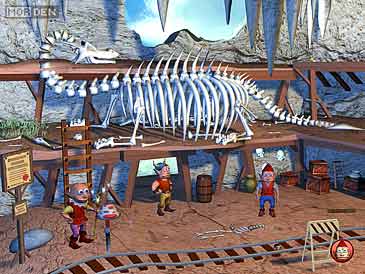
When compared to its prequels, puzzles in Gobliiins 4 have been noticeably toned down. While I could spend hours on end in a single room in any of the first three games, when playing the newest title in the series, I have no bigger problems with completing a level in just under one hour. Believe me, the difference in difficulty is huge, considering I could be figuring out a single stage from, let's say Goblins 3, for days.
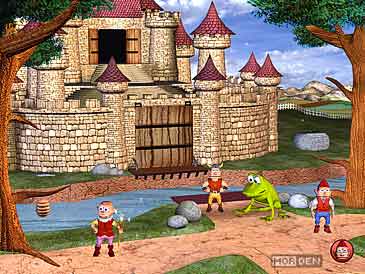
Back in the day games were tough, and that's a fact. Sometimes I felt as if developers didn't really care whether or not a normal thinking person could actually complete a given title. Goblins series was one of the toughest adventures around, but that was in the early nineties. I'm guessing the developers didn't want to punish those, who bought a $20 game and just wanted to have some fun, rather than pull their hair out and scream in frustration.
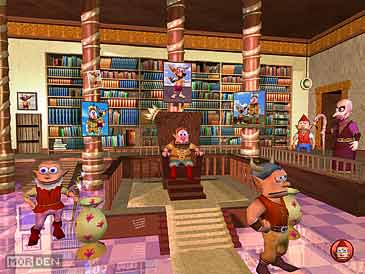
Puzzling and game-play aside, it's hard to overlook the fact that Gobliiins 4 doesn't really look like a game published in 2009, or 2004 for that matter - It's more of a blast from the past, with a fistful of indie spice. From what I can tell, the development team consisted of only few people, so one ought to think of Gobliiins 4 as a labor of love rather than your regular, commercial product.
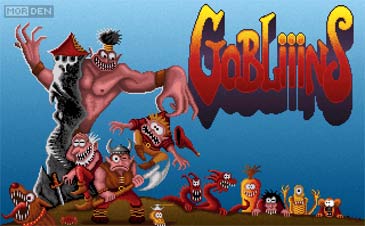
Truth be told, I don't mind the outdated look one bit. If anything, it contributes to the quirky feel that's always been a part of Goblins. All of the backgrounds are pre-rendered, with 3D models layered over them - much like in well known Alone in the Dark or Resident Evil. The goblin models aren't as detailed as those seen in Telltale Games' productions, but their animation is fluent and there are enough physical gags hidden throughout the game to keep you smiling from start to finish.
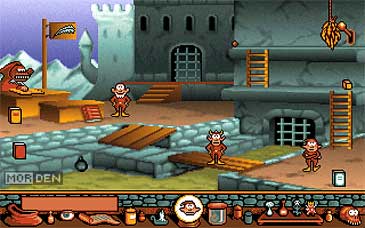
With the visual aspect of the game covered, let's talk a bit about the music. Sadly, the original artist, Charles Callet, doesn't return to compose the score, but his successor, Didier Sallustro aka Tonton Didou does a fine job as well. Some of the tunes sound like remixes of the old AdLib score from previous games, which earns the soundtrack a plus in my books. Overall the music is enjoyable, although it does tend to stop after a while, leaving only the ambience and sound effects. The only improvement I'd like to see in the sound department are the correctly handled loops - The rest is just great and I have absolutely no complaints.
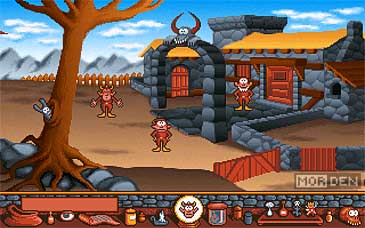
Gobliiins 4 wouldn't be a proper sequel if it didn't feature the peculiar goblin speech. Back in early nineties digitized speech was a rare sight, so first three games used this funny sounding "goobly-boop" talk, similar to what Rare used in their Banjo Kazooie games. It sounds a bit different this time around, more like snippets of normal speech played backwards, but it's adorable nonetheless. And yes, adorable is a proper word to describe this phenomenon.
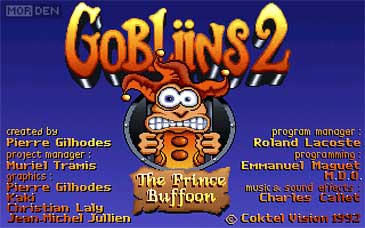
So, with sound described, we're ready to wrap this entry up, right? Wrong. The excitement of Gobliiins 4 doesn't end with the cover title. The developers were kind enough to include all of the three DOS games and that's the reason why you see these old-school screenshots. That's right - Thanks to ScummVM, we get to re-live and re-play first three games of the series. I know there are many of those, who never heard of Goblins, and the inclusion of previous games makes Gobliiins 4 a must have.

Gobliiins, Gobliins 2: The Prince Buffoon and Goblins 3 aka Goblins Quest 3 are all present and flawlessly emulated. As you may or may not know, each of these games got two releases, one being a regular floppy and another being a CD version with enhanced soundtrack. All of the classic games present on the Gobliiins 4 disc are the CD versions and this creates a small problem.
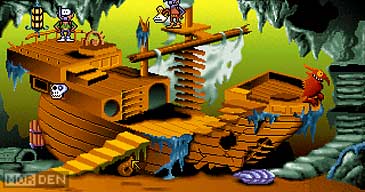
The way Goblins games were built didn't allow multiple soundtrack, so it was either the CD tracks or AdLib music. This means that those who got a floppy version were missing out on CD music and vice versa. To make matters worse, both the CD and floppy soundtracks are entirely different. So, in other words, buying Gobliiins 4, you are stuck with the CD soundtracks for Goblins 1 to 3. It's a shame really, since the AdLib soundtrack is generally considered to be superior to the CD one, which was often limited to ambience. Having CD quality environment sounds might have been impressive back in the early nineties, but anyone in their right mind would pick the AdLib music any day.
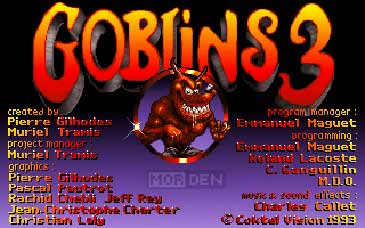
Another thing worth noting is that when you run one of the classic games, they're being started via a batch file. A ScummVM command is executed and you're being taken directly into the game. Old Goblins were originally DOS games and they're pretty low-res, but when you start the ones you get with Gobliiins 4, you might notice that the pixels are filtered and smoothened. This is because the batch files contain the following command: -ghq2x. Remove it, and you'll get the original pixly look. And remember that there's a separate batch file for each game.
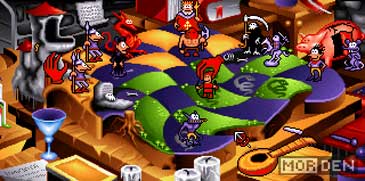
The Gobliiins 4 version I bought is a so called MULTI3 edition, which means it uses three languages - in this case Polish, Czech and Hungarian. When poking around in the classic Goblins resources, I came across a small irregularity. Since the DOS games got localized, the intro.stk files present in Gobliins 2 and Goblins 3 filders are different than those from the '92 and '93 originals. Aside from obvious differences due to translation, additional 22 bytes were added to the file header, which made it impossible to unpack the file using ScummVM tools.
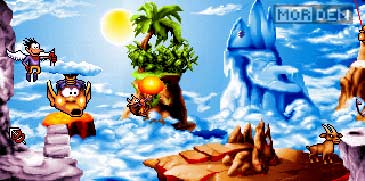
I have reported this on ScummVM boards and thanks to one of the developers, DrMcCoy this small error has already been fixed, so if you feel like playing around with the resources, grab the latest SVN build of ScummVM tools. Since I'm on the technical side of things, it's worth to mention that Gobliiins 4 doesn't use any kind of protection against copying other than the CD check. If you're anything like me, you hate being forced to have the game disc present in the drive at all times and that's why I created a small patch that takes care of this problem. You'll find download links at the bottom of the page.
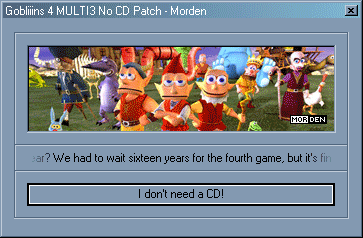
It is important that you understand this patch was not created to circumvent the copy protection, as there isn't any. You might just as well run a copy, as long as the disc is present in the drive. The patch overwrites four bytes in the launcher app to override the check and that's it. You can keep your precious disc inside the box and enjoy the game on all of your computers. We're living in a world where most people own a desktop computer as well as a laptop, so do we really need the game to ask us for the disc? No.
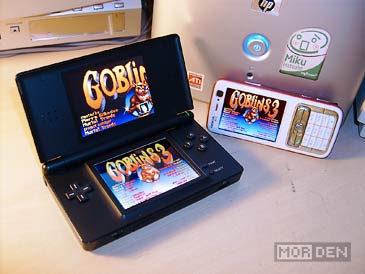
Since the original Goblins are emulated through ScummVM, you can easily take those games with you anywhere you go if you own a smartphone, PSP, Nintendo DS or any other portable platform that ScummVM has been ported to. So grab your flash cart and give it a try. This of course means you have to buy Gobliiins 4, but if you want to be among the people I respect and admire, you'll get this game anyway.
● - Gobliiins 4 No-CD Patch @ GameCopyWorld.com
● - Gobliiins 4 No-CD Patch @ RapidSpread.com
カレンダー
| 11 | 2025/12 | 01 |
| S | M | T | W | T | F | S |
|---|---|---|---|---|---|---|
| 1 | 2 | 3 | 4 | 5 | 6 | |
| 7 | 8 | 9 | 10 | 11 | 12 | 13 |
| 14 | 15 | 16 | 17 | 18 | 19 | 20 |
| 21 | 22 | 23 | 24 | 25 | 26 | 27 |
| 28 | 29 | 30 | 31 |
カテゴリー
フリーエリア
最新CM
[02/23 jikoo]
[02/23 jikoo]
[02/21 sara]
[01/04 Inlagd]
[11/21 Inlagd]
最新記事
(01/31)
(01/27)
(01/04)
(11/14)
(11/12)
最新TB
プロフィール
HN:
No Name Ninja
性別:
非公開
ブログ内検索
最古記事
(12/17)
(12/19)
(12/23)
(12/25)
(03/30)
P R


